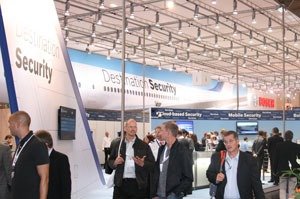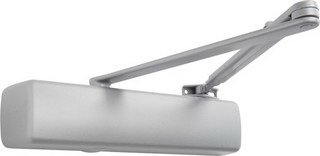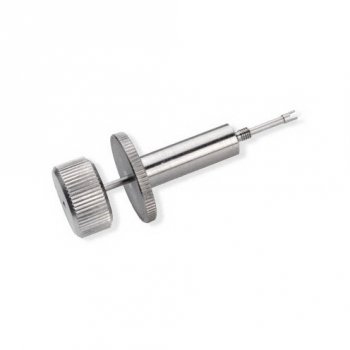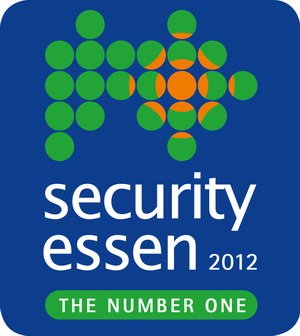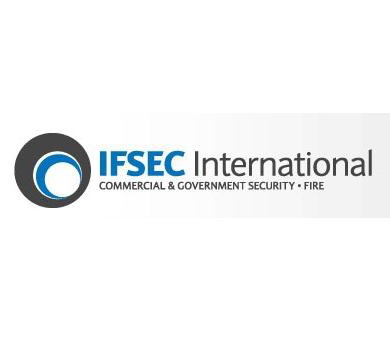A Security Essen 2012 bezárta kapuit. Néhány gondolatot mutatunk be írásunkban a kiállítás után a biztonságtechnika fejlődése kapcsán. Ma a biztonságtechnika a legnyitottabb iparág – ez lehet a Security Essen 2012 sommás összefoglalója.
Miközben a kiállítások általában zsugorodnak, az esseni seregszemle tovább nőtt, földolgozhatatlan mennyiségű újdonságot mutattak be, állítja az egyik magyar résztvevő.
Lassan közhely számba megy, de az idei Security Essen tanulsága szerint tovább nőtt az integráció. Ez a tény a nyílt platformoknak köszönhető, a biztonság új megközelítése az Interneten keresztül történik, elmúltak már azok az idők, amikor minden gyártó zárt rendszerben gondolkozott. A gyártók versengenek, melyikük tud rugalmasabb rendszert összeállítani. A zárt rendszereknek leáldozott, helyette a rugalmasság és a nyitottság lépett előtérbe.
Újdonságok Essenből
A TKH Security új biztonsági menedzsment rendszere, amely a Vigyázz! (Fore!) névre hallgat, rendkívül olcsón, 1750 euróért kapható, egyszerű, könnyen kezelhető, és ötvözi a számítástechnikai eszközöket: laptopot, iPadet, mobiltelefont. Kezeli a beléptetést, a kamerákat, a riasztást e-mailben és SMS-ben is átküldi.
Nyilvánvalóan a közeli, repülőteret szimbolizáló Bosch standon bemutatott alkalmazások más dimenziót képviselnek, a TKH rendszere mégis a korszellemet tükrözi.
Az idei jelszavak: átjárhatóság és egységesítés
A Siemens biztonsági ágazatának vezetője az átjárhatóságot emelte ki, mint kulcsszót, elmondta, hogy tudatosan használja ezt a kifejezést, mivel a Siemens biztonsági termékei képesek együttműködni más rendszerekkel akár épületek, akár vállalatok, sőt városok szintjén is.
Shahar Ze’evi, a Tyco vezető termékmenedzsere az egységesítésre tette a hangsúlyt, miközben a Victor videomegfigyelő rendszert mutatta be, amely egyesíti a beléptetést, a videomegfigyelést, a behatolásjelzést több más alkalmazással egy rendszerben. Ez már több, mint integráció, mivel a technikai fejlődés lehetővé teszi az eszközök átjárhatóságát minden irányban. Ezzel a felhasználó rendkívül könnyen tudja kezelni az összetett biztonsági rendszerét: mint például, hogy a tűzgátló ajtót más rendszerekkel együtt, egy helyen nézheti meg.
Rohanó IP
A hálózati rendszerek rohamosan terjednek a biztonságtechnikai piacon, mint ahogy ez kiderül az IMS Researchnek a Securinón is bemutatott jelentéséből.
Bár Todd Rockoff, a HDcctv Szövetség ügyvezető igazgatója szerint az összetett hálózati videofelügyeleti megoldások a telepítést bonyolultabbá teszik, és növelik a végfelhasználók költségeit. De az IMS Research említett felmérése szerint a megapixeles IP kamerák eladása 2016-ig várhatóan évente 20 százalékkal fog nőni. Todd viszont úgy véli, hogy az elkövetkező két évben megapixeles IP kamerák eladása 5 százalékkal csökkenni fog a kamera piacon, a HD-piacon pedig 40 százalékos lesz a visszaesés, szerinte 2014-ben a HDcctv Szövetség szabványának megfelelő kamerák növelni fogják piaci részesedésüket.
Jonas Andersson, az ONVIF elnöke üdvözölte, hogy megjelentek más szabványok is a piacon, mivel minden szabványosítási törekvést fontosnak tart.
Shahar Ze’evi, a Tycotól azonban jelezte, hogy a piac már választott – és ugyanúgy, mint a HD-DVD kontra Blu-Ray esetében, ahol a Sony „szabvány” végül is győzött – és a piac nem feltétlenül a legjobb technológiát választotta, mert az emberek pénztárcája döntött.
Stephan Backmann, a Tycotól az elmúlt 40 év változásait a biztonsági iparban úgy foglalta össze: 40 évvel ezelőtt minden rendszer külön szigetet alkotott. De ma már az emberek egy dolgot szeretnének, és az IP hálózati infrastruktúra rendelkezésre áll, biztosítva az integrációt.
Jürgen Alz, a Bosch Building Security munkatársa az ONVIF megbeszélésén elmondta, jelenleg a szakmai munka a konvergencia irányában halad, számos új, eredeti ötlettel fogunk találkozni, mert a fejlesztő elmék szabadon dolgoznak. Ma még nem tudjuk, mik lesznek ezek az új ötletek, be biztos vagyok benne, hogy néhány nagyszerű, új találmány van születőben – tette hozzá Jürgen Alz.
Forrás: Rob Ratcliff írása, www.info4security.com
English
Security companies keen to be seen as the most open in the industry
By Rob Ratcliff
It’s almost a cliché but the theme at this year’s Essen (my first) is once again very much integration.
But more than that, it’s about the opening up of platforms. The web approach to security – open technologies that work with other manufacturer’s systems. Gone are the days of protectionist closed systems.
Now, manufacturers such as Samsung and Siemens seem to be tripping over each other to demonstrate how flexible their systems are.
It seems the days of closed system protectionism – of manufacturers keen to sell you into their ecosystem alone – are gone, and that in its place flexibility and openness has become de rigeur.
The first article I pushed out this week was about a new security management platform from TKH Security – called Fore! – that is ridiculously priced (just £1400) and is so elegantly simple in its usability and design that it almost beggars belief.
Overshadowed somewhat by the Bosch ‘airport’ next door, many might have missed this low-key launch, but it seemed to me to capture the zeitgeist in the security industry perfectly.
This year’s buzz phrases: interoperability and unification
In a meeting with Siemens’ head of security products, the word that was used was interoperability.
This is a very deliberate choice of words, they say, being distinct from integration. Interoperability allows Siemens’ security products to work together, whereas integration can be multiplied all the way up to the integration between buildings, companies and even cities.
Shahar Ze’evi, senior product manager at Tyco company American Dynamics was very excited about their new video management system, Victor, saying that it will bring together access, video surveillance, intrusion detection and more into one system.
This process is not integration – that was the technical development to allow cross-compatibility – but what Victor does is unifies the systems into one place making the end user experience simpler.
Being able to control your fire doors from the same system as you watch them is certainly an attractive out of the box solution, and Shahar’s demo of the system seemed impressive within the confines of a show.
Rush to IP?
Arguably this integration has all been enabled by the increasing prevalence of the networks they operate on.
However, there are some – notably Todd Rockoff from the HDcctv Alliance who I spoke to on Wednesday – that think the rush to megapixel IP cameras has created a complicated network of video surveillance solutions that takes the installer longer to optimise and costs the end user more.
He told me about figures from IMS Research that put the growrth of MP IP camera sales at around 20% compound annual growth to 2016.
Todd thinks that in the next two years MP IP cameras will see a significant decline in sales from around 95 of the HD market today to 60% in 2014 as fully HDcctv Alliance compliant cameras start taking market share.
Indeed, ONVIF chairman Jonas Andersson welcomed other ‘competing’ standards in the industry in general terms saying at the ONVIF interoperability briefing on Wednesday at Essen that anything that led to standardisation is a good thing.
Shahar however indicated that the industry has already made its choice – and in the same way as HD-DVD versus Blu-Ray where the Sony ‘standard’ eventually won out – it’s not necessarily down to which was the best technology, but what the people have voted for with their wallets.
Stephan Backmann at Tyco summed it up nicely when I asked him what has changed in the security industry in the last 40 years.
He said: “40 years ago each system was an island. Today, people want one thing. Having the IP network infrastructure has allowed us to do integration.”
Bosch Building Security’s Jürgen Alz said at the ONVIF briefing that now the technical work of convergence is done we will see new original ideas. With the collective minds of the industry free from working on this he said:
“We will see new things – we don’t know what they are yet. I’m sure we’ll see some great new inventions.”
Source: www.info4security.com


















